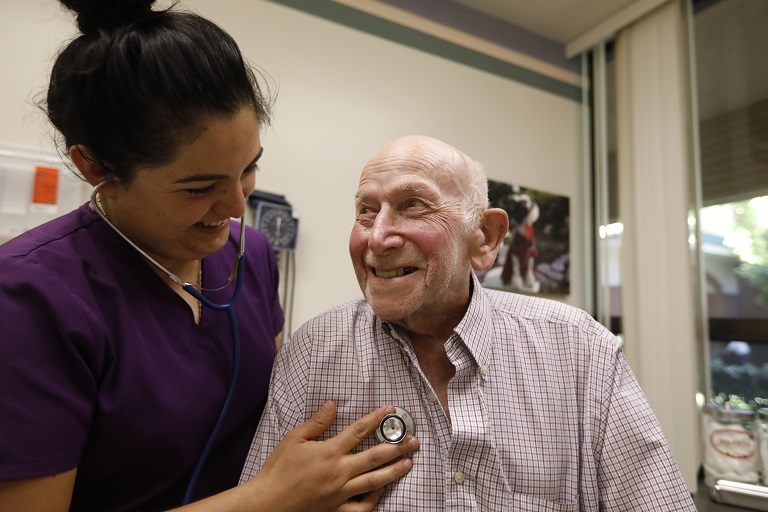The Healthcare Infection Control Practices Advisory Committee (HICPAC) to the Centers for Disease Control & Prevention (CDC) met on November 14 and 15 for a public meeting. The meeting included presentations by the Infection Control in Healthcare Personnel Guideline Workgroup and the Isolation Precautions Guideline Workgroup, with committee discussion on the work presented. Committee members voted on and approved updated recommendations for healthcare personnel work restriction guidelines that could, if approved and recommended by CDC, reduce the amount of time healthcare personnel are restricted from work following respiratory virus infection. The committee additionally voted on and approved responses to a CDC letter that will guide further Isolation Precautions workgroup activities.
Infection Control in Healthcare Personnel Guideline
The Infection Control in Healthcare Personnel Guideline Workgroup has been working to update the 1998 Guideline for Infection Control in Healthcare Personnel. In 2019, Section 1 of the guideline, Infrastructure and Routine Practices for Occupational Infection Prevention and Control Services, was published to make recommendations related to establishment and maintenance of an occupational health program.
The workgroup continues work on Section 2, Epidemiology and Control of Selected Infections Transmitted Among Healthcare Personnel and Patients, which addresses management of healthcare personnel exposures to infections or illness including postexposure prophylaxis and work and patient care restrictions. The November 14 and 15 meeting focused on draft recommendations on viral respiratory infections.
The workgroup presented two draft recommendations to the committee – one related to work restriction of asymptomatic healthcare personnel who have a known or suspected exposure to a respiratory virus and a second recommendation for work restriction of healthcare personnel with a suspected or confirmed viral respiratory infection. Committee discussion included consideration of factors that might affect the duration of healthcare personnel work restrictions including working with persons at risk for severe disease, the use of testing to facilitate returning to work, and the impact of certain factors on duration of work restrictions including vaccination status, the use of antivirals, and the use of source control.
Ultimately, it was determined that most of these considerations, except for source control, should not impact duration of work restrictions. Separation of high-risk individuals from non-high-risk individuals in healthcare settings was rarely feasible and therefore work restrictions should adequately protect all populations. Testing to return to work has not historically been done for influenza and while it is currently recommended for SARS-CoV-2 infection, existing literature suggests that persons infected with respiratory viruses are contagious earlier in the disease course, so shorter work restriction durations are not likely to be further reduced by testing. Additionally, lab testing may be difficult to implement, while home testing may lack objectivity, accuracy, and documentation. Lastly, there was limited evidence to indicate a reduced risk of transmission related to either vaccination or the use of antivirals.
Only the use of source control to reduce work restrictions was found to be sufficiently supported by evidence for consideration by the committee. As such, the committee discussed and ultimately approved draft recommendations related to asymptomatic healthcare personnel with exposure and healthcare personnel with confirmed infection.
Asymptomatic healthcare personnel with suspected or known exposure would be permitted to continue working after exposure, provided they wear source control and monitor for the development of signs and symptoms of respiratory infection beginning on the first day of exposure until five days have passed since last known exposure. Healthcare personnel with confirmed or suspected infection would be restricted from work until at least three days have passed since symptom onset, fever has been resolved at least 24 hours, symptoms have improved, and the healthcare personnel feel well enough to return to work. Returning healthcare personnel would then wear source control until seven days have passed since symptom onset or first positive test. These draft recommendations would shorten both the duration of work restriction and the duration of source control compared to current existing recommendations for SARS-CoV-2.
Isolation Precautions Guideline
The Isolation Precautions Guideline Workgroup continues work to update the 2007 Isolation Precautions Guideline. During the November 2023 HICPAC meeting, the committee approved Part 1 of a draft update, which was sent to CDC in preparation for a public comment period. CDC responded in January 2024 with a letter to HICPAC outlining four questions for further consideration related to the Transmission by Air section of the 2023 draft guideline. The workgroup presented draft responses to these questions during the November 14 and 15 meeting, which were discussed and ultimately approved by the committee. CDC questions and HICPAC responses are outlined below.
Should there be a category of Transmission-Based Precautions that includes masks (instead of NIOSH-approved N95 [or higher-level] respirators) for pathogens that spread by air? Should N95 respirators be recommended for all pathogens that spread by air?
The committee decided that N95 respirators should not be recommended for all pathogens that spread by air and that there should be a category of Transmission-Based Precautions that includes masks for pathogens that spread by air.
Can the Workgroup clarify the criteria that would be used to determine which transmission by air category applies for a pathogen? For the category of Special Air Precautions, can you clarify if this category includes only new or emerging pathogens or if this category might also include other pathogens that are more established? Can you also clarify what constitutes a severe illness?
The committee decided that the 2023 draft guideline will be updated to include in the narrative important pathogen considerations for determining which transmission by air category applies and to clarify that Special Air Precautions might include pathogens that are already established. The committee will clarify that mask recommendations are based on observed effectiveness in reducing risk of transmission and will clarify severe illness as “morbidity and mortality” to more clearly encompass a variety of adverse outcomes that are not limited to hospitalization and death.
Is the current guideline language sufficient to allow for voluntary use of a NIOSH-approved N95 (or higher-level) respirator? Should the document include a recommendation about healthcare organizations allowing voluntary use?
The committee decided that the current guideline may not be sufficient to allow for voluntary use of NIOSH-approved N95 (or higher-level) respirators because current federal regulations under the Occupational Safety and Health Administration (OSHA) make voluntary use at the discretion of the employer, rather than the individual employee. However, the committee decided that an official recommendation in the guideline would not be necessary, as the narrative language clearly supports the concept of voluntary use when not otherwise required for Routine Air Precautions.
Should there be a recommendation for use of source control in healthcare settings that is broader than current draft recommendations? Should source control be recommended at all times in healthcare facilities?
The committee decided that a recommendation for source control that is broader than what is in current draft recommendations is not indicated. Further, the committee determined that source control should not be recommended at all times in healthcare settings and source control decisions should be determined by local risk of pathogen transmission and epidemiology.
What Happens Now
The draft recommendations for the Infection Control for Healthcare Personnel Guideline that were approved during the November 14 and 15 meeting will be sent back to CDC for review. If accepted by CDC without further questions or need for clarification, the draft guideline will be published in the Federal Register for public comment. At this point, any member of the public, including LeadingAge members, will have the opportunity to submit written comment on the guideline. LeadingAge will watch for and notify members when this opportunity becomes available. It is important to note, however, that these draft recommendations have been neither finalized nor implemented. Nursing homes and other healthcare settings must continue to adhere to current CDC recommendations for work restriction that include restricting healthcare personnel with confirmed or suspected illness for at least 7-10 days.
The responses to the questions posed by CDC related to Isolation Precautions that were approved during the November 14 and 15 meeting will be returned to CDC and will provide a framework for the Isolation Precautions Guideline Workgroup to make updates to the 2023 draft guideline. The updated draft will be presented at a future HICPAC meeting for discussion and potential approval.
The next HICPAC meeting is currently scheduled for March 6 – 7, 2025. It is likely that this meeting will include further discussion on the Transmission by Air section of the Isolation Precaution Guideline addressed during this November 2024 meeting.

 Shutdown Week Three: Impact of Ongoing Closure on Affordable Housing
Shutdown Week Three: Impact of Ongoing Closure on Affordable Housing


